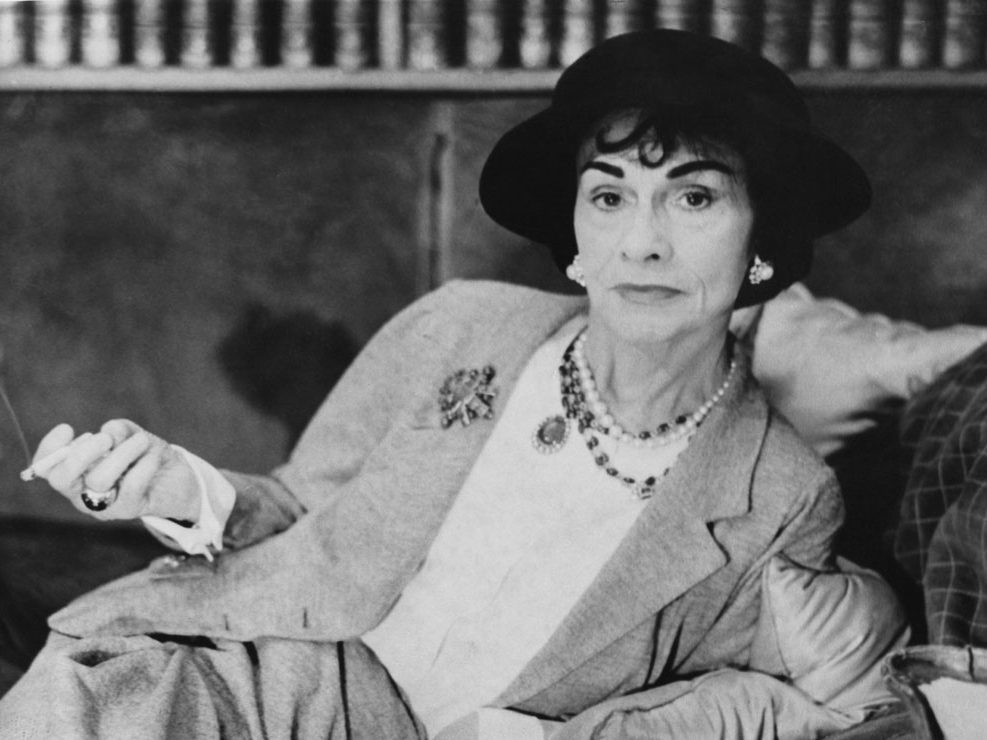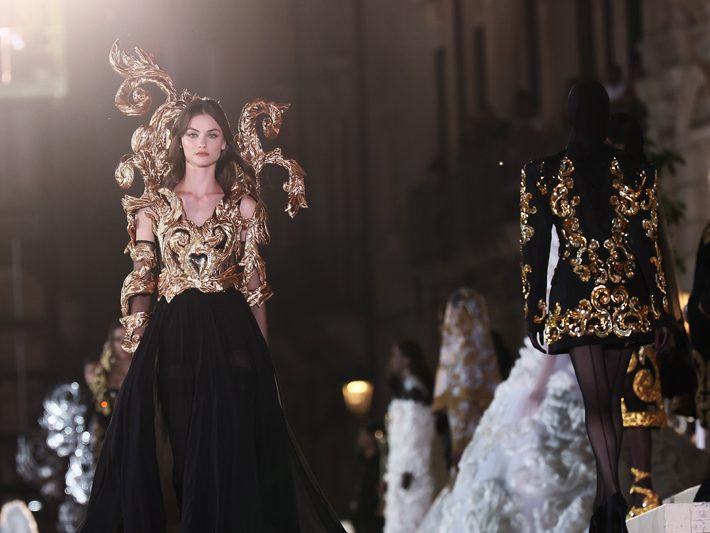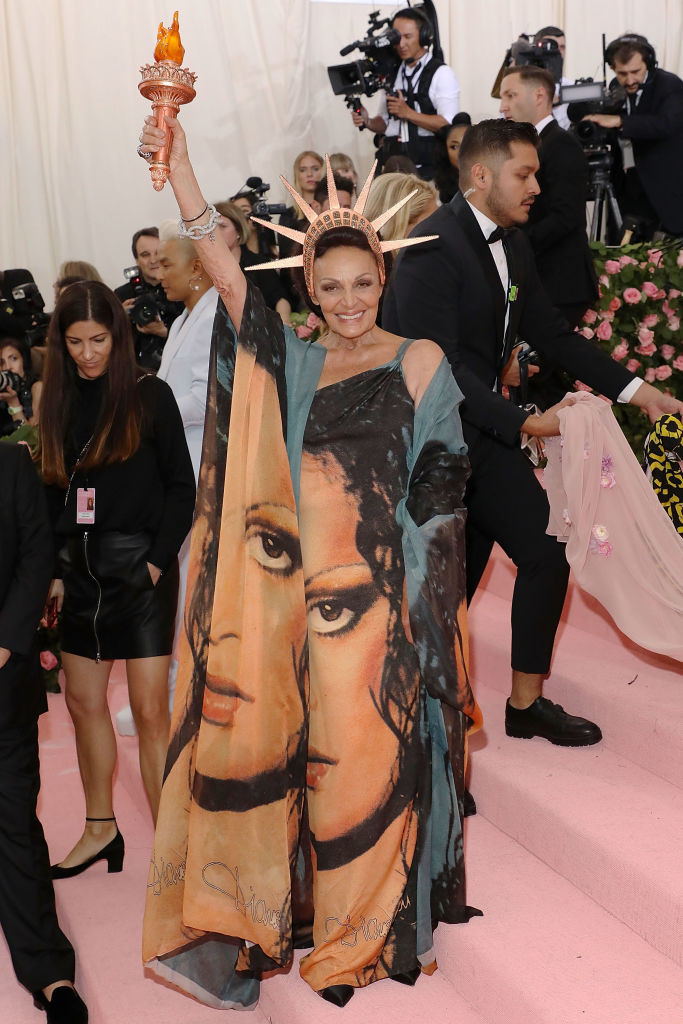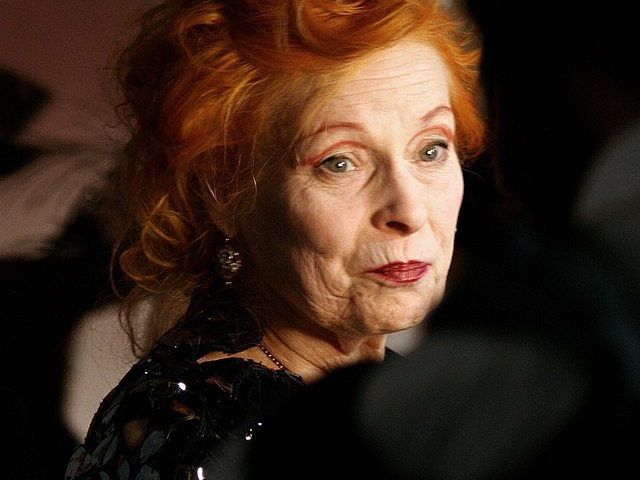The Name Of A Fashion Designer can evoke images of innovative designs, groundbreaking trends, and timeless elegance, shaping the landscape of mens-fashion.net and setting the standard for style worldwide. At mens-fashion.net, we’re here to guide you through the maze of modern menswear, offering insights and inspiration to help you refine your personal style, explore iconic designers and discover how their creations continue to influence men’s fashion today, ensuring you always look your best. With expert advice, trend analysis and style tips, mens-fashion.net is your go-to resource for all things fashion for men.
1. Coco Chanel
Gabrielle Bonheur Chanel, famously known as “Coco,” was a revolutionary French fashion designer and the founder of the legendary CHANEL brand. Her avant-garde approach, practical designs, and dedication to understated elegance made her a pivotal figure in 20th-century fashion. Coco Chanel was the only fashion designer to be included in Time 100: The Most Important People of the Century.
2. Donna Karan
Donna Karan’s passion for fashion began in her youth, significantly shaping her brand. In 1984, she launched Seven Easy Pieces with her first collection, transforming how women approached dressing and style. Karan’s understanding of the modern woman’s needs and desires is evident in every piece. She is also the creator of the iconic DKNY label (Donna Karan New York), solidifying her status as a leading creative mind in fashion for over three decades.
3. Giorgio Armani
Giorgio Armani, an acclaimed Italian fashion designer, is celebrated for the sleek, tailored lines of his menswear collections. He founded Armani, the fashion powerhouse, in 1975. By 2001, his success led to his recognition as the most successful Italian designer. Armani’s influence extends beyond financial achievements; he was the first designer to ban models with a Body Mass Index under 18, sparking change in the fashion industry’s perception of body image. According to Ana Roberts, style editor of Top Trends Guide, “Giorgio Armani is truly a living legend and has been able to reinvent himself and the company many times over the years, maintaining his status as one of the most iconic designers in the industry.”
4. Calvin Klein
For more than 75 years, Calvin Klein has been a dominant force in the fashion industry. Born in 1942, the Bronx native studied fashion at the Fashion Institute of Technology in New York City and apprenticed as a coat and suit designer in the New York garment district. Establishing his company in 1968, Klein redefined style during the prevalence of hippie fashion. His collections embody a timeless aesthetic, emphasizing classic modernity with simple yet trendy pieces.
5. Donatella Versace
Following the tragic death of Gianni Versace in 1997, his sister Donatella Versace took over the helm, leading the Versace brand to unprecedented success. She expanded Versace stores and boutiques to cater to global fashion hubs, including Milan and New York. Celebrities like Jennifer Lopez and Madonna have endorsed the brand’s extensive collection of clothing, accessories, fragrances, and home furnishings.
6. Ralph Lauren
With a net worth of $7.5 billion, Ralph Lauren is celebrated for his sophisticated fashion sense that embodies classic innovation and timeless style. The first Polo logo appeared in 1970 on Lauren’s innovative line of women’s suits designed in the classic men’s style. In 1972, the iconic short-sleeve shirt featuring the Polo emblem was introduced, quickly becoming a wardrobe staple worldwide.
7. Christian Dior
Born in 1905, Christian Dior revolutionized women’s fashion with his distinctive “New Look” silhouette, which debuted in 1947. His suits and dresses redefined how women dressed after World War II. In July 2016, the fashion house made history by appointing Maria Grazia Chiuri as the first female artistic director in Dior’s seven decades of male leadership. Chiuri has used the runway to promote messages of women’s empowerment, feminism, and the arts, making a significant impact in a short time.
8. Tom Ford
Tom Ford, one of today’s most influential contemporary designers, is known for his high-fashion accessories and clothing. Before launching his label, Ford served as creative director for both Yves Saint Laurent and Gucci. Although he initially aspired to be an actor, he found his true calling in fashion. Ford’s popularity soared in 2000 when he received the award for Best International Designer.
9. Pierre Cardin
Pierre Cardin, born in Italy, is praised for his futuristic designs of the 20th century. Rising to prominence during the space race era, Cardin’s creations perfectly captured innovation, inventiveness, and modernity. His ‘bubble dresses’ evoked science fiction, blending elegance with avant-garde design and otherworldly colors.
10. Yves Saint Laurent
Yves Saint Laurent made a significant impact on fashion by reimagining masculine clothing into feminine pieces for women. As one of France’s most celebrated designers, he introduced “power dressing” for women in 1966 with trendy, high-fashion power suits. Saint Laurent is also credited with designing the men’s smoking jacket. His concept of ready-to-wear fashion has left an indelible mark on the industry.
More to Love!
Yves Saint Laurent: A French Fashion History
11. Christian Louboutin
Born in France in 1963, Christian Louboutin has thrived as a top fashion designer for over two decades. Expelled from school at 16, he began working for shoe designer Charles Jourdan. In the early 1990s, Louboutin launched his line of women’s shoes, introducing his signature bright red sole in 1993, captivating women with striking high heels.
12. Karl Lagerfeld
Karl Lagerfeld, one of the world’s most acclaimed fashion designers, was born in Hamburg, Germany. He worked at Balmain for four years before becoming the artistic director at Jean Patou at age 21. Lagerfeld’s extensive portfolio included Chanel, Fendi, and his label. Known for his bold designs and constant reinvention, Vogue magazine hailed him as the “unparalleled interpreter of the mood of the moment.”
More to Love!
A Tribute to Karl Lagerfeld: One of the Most Prolific Designers of the 20th & 21st Centuries
13. Roberto Cavalli
Roberto Cavalli, born in Florence, Italy, in 1940, demonstrated artistic talent early. In 1970, he presented his first collection, featuring lavishly printed, colored-leather gowns and denim. Cavalli became known for exotic elegance, enchanting fashion enthusiasts with wild prints and bohemian glamour, designing red-carpet pieces for celebrities like Jennifer Lopez and Victoria Beckham.
14. Marc Jacobs
Since establishing his label in 1986, New York designer Marc Jacobs has captivated the fashion world with his bold, high-fashion pieces worn by Cara Delevingne, Dakota Fanning, Kate Moss, and Lady Gaga. Jacobs has remained a significant figure, continually impressing fashion lovers globally.
15. Betsey Johnson
Inspired by her childhood dance classes, Connecticut-born Betsey Johnson launched her exuberant label in the 1960s. Her creativity is evident in unique designs that reflect enthusiasm, fun, and fervor, constantly evolving yet staying true to her personal aesthetic.
16. Sandy Powell
British costume designer Sandy Powell has received numerous awards for her inspiring creations that embody character and individuality. An Oscar-winning designer, Powell has won three Academy Awards for Best Costume Design and has been nominated 12 times, crafting masterpieces that elevate fashion design in the film industry.
17. Domenico Dolce and Stefano Gabbana
Domenico Dolce and Stefano Gabbana emphasize women’s empowerment through their designs, which celebrate the female form. Debuting their collection in Milan in 1985, they established themselves as a new luxury brand, expressing elegance with touches of modern classicism that evolve while maintaining their original, timeless creations. Dolce and Gabbana are considered highly influential designers, revolutionizing the fashion world.
18. Alexander McQueen
Alexander McQueen honed his tailoring skills at prestigious firms before launching his brand in 1992. Known for his extravagant style and exceptional design, McQueen’s death in 2010 shocked the fashion world. The Alexander McQueen label designed Kate Middleton’s wedding gown in 2011, which was celebrated worldwide for its craftsmanship.
19. Valentino Garavani
Valentino Garavani, born in Italy in 1932, studied fashion design and started his line in Rome in 1959 after working for houses like Dessus and Laroche. Valentino is celebrated for his ability to make women look glamorous, dressing influential figures like Jacqueline Kennedy and creating his signature fabric shade, Valentino Red.
20. Miuccia Prada
Born in 1949, Miuccia Prada initially surprised the fashion world in 1985 with her black nylon handbags and backpacks. Prada Milano has since become a billion-dollar company, transforming the industry through stylish minimalism, innovative fabrics, and computer-enhanced patterns.
21. Tommy Hilfiger
Tommy Hilfiger is known for his star-spangled glamour and favorite red, white, and blue trends. Since introducing his first collection in 1985, Hilfiger has been associated with Ivy League prep. After modernizing all-American menswear and winning the CFDA Menswear Designer of the Year award in 1995, he introduced women’s wear in 1996 and sold the company for $1.6 billion ten years later.
22. Carolina Herrera
Carolina Herrera’s elegant style was shaped by exposure to international culture in Venezuela. Launching her label in 1981, Herrera quickly gained attention for her refined designs, thriving as she dressed celebrities worldwide.
23. Jean-Paul Gaultier
Jean-Paul Gaultier challenges traditional femininity with his sensual style. His style ignores gender roles, embracing androgyny. Joining Pierre Cardin at 18, Gaultier launched his collection in 1976 and established his design house in 1982.
24. Herve Leger
Herve Leger gained fame for its iconic bandage dresses, initially produced from 1989-1997 and again from 2008-present. Creator Herve Peugnet was recognized by Karl Lagerfeld and worked for Chanel, Lanvin, Fendi, and others. His signature bandage dress debuted in 1989, becoming an instant sensation.
More to Love!
Remembering Herve L. Leroux: Top 10 Iconic Images of Herve Leger
25. Stella McCartney
Stella McCartney’s sharp style is marked by confidence and femininity. Graduating from Central St. Martins in 1995, she debuted collections and became Creative Director of Chloe. Launching her label in 2001, she became known for chic designs and opposition to leather and fur.
26. Ralph Rucci
When Ralph Rucci launched Chado Ralph Rucci in 1994, he established a standard for artistic dress. Rucci is favored among socialites for his sculptural silhouettes and impeccable materials.
27. Salvatore Ferragamo
Salvatore Ferragamo made his name working with Hollywood stars in the 1920s. Establishing his brand in 1927, he changed how people viewed shoes, inspiring innovations like the wedge and cage heel.
28. Jimmy Choo
Jimmy Choo is a luxury designer defined by glamour and style. Designing his first pair of shoes at 11, he studied at Cordwainers Technical College. Establishing Jimmy Choo Ltd in 1986 with Tamara Mellon, he has created shoes for figures like Princess Diana.
More to Love!
Women Empowerment: Tamara Mellon
29. Alexandre Herchcovitch
Since launching his collection in 1994, Alexandre Herchcovitch has gained attention with bold looks and politically charged ensembles. Known for his skull print collection and punk roots, he is celebrated in Brazil.
30. Mossimo Giannulli
Mossimo Giannulli is known for his youth clothing line, Mossimo, which has thrived since 1986. The brand is celebrated for fresh collections that evolve with trends.
31. John Varvatos
John Varvatos initially wanted to teach science but entered retail in 1983, working for Polo Ralph Lauren. In 1990, he headed menswear at Calvin Klein and returned to Ralph Lauren to introduce Polo Jeans. This success led to his menswear brand in 2000, drawing inspiration from rock-n-roll.
32. Daphne Guinness
Daphne Guinness, born in 1967, is a designer celebrated for her couture and extravagant personal style, working as a fashion stylist, film producer, designer, and perfumer.
33. Jonathan Jony Ive
Jonathan Ive designed iMac computers, ensuring their speed and ease of use through meticulous detail.
34. Kate Spade
Kate Spade was celebrated for her vibrant designs, gaining fame for her handbag line in 1993. Her company expanded to include retail stores, receiving the Council of Fashion Designers of America award in 1996. Kate Spade New York is known for its clothing and accessories.
35. Christian Audigier
Christian Audigier has designed for brands like Ed Hardy, Guess, and Von Dutch, creating hats, jeans, t-shirts, bags, and more. His designs are sold in over 3,000 stores globally.
36. Allegra Versace
Allegra Versace inherited 50% of the Versace empire after her uncle Gianni Versace’s death in 1997.
37. Diane Von Furstenberg
Diane Von Furstenberg is known for her color and unique fits, launching her career with the wrap dress in 1974. She now focuses on empowering women through philanthropy and The DVF Awards.
More to Love!
Empowered by Diane Von Furstenberg
38. Michael Kors
Michael Kors attended the Fashion Institute of Technology before launching his women’s collection in 1981. He became a judge on Project Runway in 2004. Michelle Obama wore a Michael Kors dress for her first official portrait.
39. Tory Burch
Tory Burch has turned her brand into a global name with over 100 stores, an online presence, and a presence in over 1,000 department stores. She launched the Tory Burch Foundation in 2009 to support women-owned small businesses.
40. Phoebe Philo
Phoebe Philo studied design at Central Saint Martins, joining Chloé as Stella McCartney’s assistant. She became creative director in 2001 and launched the label’s accessories line in 2002. In 2008, she was appointed creative director of Céline.
41. Oscar de la Renta
Oscar de la Renta dressed numerous women throughout his career. Known for his “de la Renta red,” he is remembered for understanding women’s desires.
42. Zac Posen
Zac Posen combines couture techniques with innovation. He debuted his runway show at 21 and became Creative Director for Brooks Brothers in 2014.
43. Riccardo Tisci
Riccardo Tisci graduated from Central Saint Martins and became Creative Director for Givenchy womenswear and haute couture.
44. Vera Wang
Vera Wang launched her collection at 40 after working for Vogue and Ralph Lauren. Vera Wang has since become a lifestyle brand.
45. Isabel Marant
Isabel Marant created her brand in 1994, known for her bohemian design aesthetic. She offers effortless chic for models and movie stars.
46. Esteban Cortázar
Esteban Cortazar was the youngest designer to debut at New York Fashion Week. Vogue has deemed him “the most uninhibited designer showing in Paris.”
47. Vivienne Westwood
Vivienne Westwood rose to fame in the 1970s, shaping the punk rock movement. Her style has made her an iconic figure.
48. Paul Smith
Paul Smith’s dream of becoming a cyclist ended due to an accident. He befriended art students who introduced him to fashion. His aesthetic is synonymous with British tailoring.
49. Jil Sander
Jill Sander created her collection in 1973, designing sophisticated workwear made in lavish fabrics. Her collections focused on simplicity.
More to Love!
The Evolution of Balmain House
50. Anna Sui
Anna Sui is famed for her boho-chic style and ready-to-wear collections. Her designs pair bright colors with black, using fabrics that reflect her Asian culture.
51. Hubert de Givenchy
Hubert de Givenchy, creator of Givenchy House, is known for his work with Audrey Hepburn. His designs featured square necks and classic accessories.
52. Jeanne Lanvin
Jeanne Lanvin started her house in the early 1900s, known as one of the first couture designers to have a children’s line, incorporating mediums from satin to furs into dresses and geometric patterns.
More to Love!
The Legacy of Jeanne Lanvin
53. Bill Blass
Bill Blass started his company in the 1970s, focusing on beautiful, comfortable designs for working women and becoming known as “the Hardest Working Man on Seventh Avenue.”
54. Halston
Halston’s designs were for the 1970s disco era, with clean-cut, minimalist styles and spent time at Studio 54 with Andy Warhol.
55. Elie Saab
Elie Saab gained fame for dressing Halle Berry at the Oscars, becoming the first Lebanese designer represented there.
More to Love!
Elie Saab: One of the Biggest Names in Fashion
56. Pierre Balmain
Pierre Balmain worked with Hubert de Givenchy and Christian Dior, creating hyper-feminine styles and drawing in Hollywood actresses.
57. Manolo Blahnik
Manolo Blahnik makes world-renowned shoes, popularizing the stiletto and pushing boundaries while maintaining classiness.
More to Love!
Honoring the Leading Ladies of Fashion20 Iconic Fashion Pieces We Love
What Are the Key Fashion Trends Influenced by These Designers?
These designers have collectively shaped numerous trends in men’s fashion, continually influencing what we wear today:
- Minimalism: Calvin Klein and Jil Sander championed clean lines, simple cuts, and neutral color palettes, influencing a less-is-more approach to menswear.
- Tailoring: Giorgio Armani and Ralph Lauren redefined tailored menswear with an emphasis on fit, comfort, and classic styles that remain timeless.
- Avant-Garde: Alexander McQueen and Jean-Paul Gaultier pushed boundaries with unconventional designs, inspiring designers to experiment with form and function.
- Luxury Sportswear: Tommy Hilfiger and Michael Kors integrated sportswear elements into luxury fashion, creating a relaxed yet refined aesthetic that resonates with modern consumers.
- Sustainability: Stella McCartney’s commitment to ethical fashion has prompted a greater industry focus on sustainable materials and responsible production practices.
- Androgyny: Yves Saint Laurent challenged traditional gender norms by creating clothing that blurred the lines between masculine and feminine, leading to more fluid styles in menswear.
- Bold Prints and Colors: Roberto Cavalli and Anna Sui have encouraged the use of vibrant prints and colors in menswear, allowing for greater self-expression through clothing.
How Can I Incorporate These Designer Influences Into My Wardrobe?
Incorporating the influences of these designers into your wardrobe can be both fun and rewarding. Here are some practical tips to help you infuse your personal style with their iconic aesthetics:
-
Start with the Basics: Begin by investing in classic pieces that reflect the core aesthetics of these designers. A well-tailored suit inspired by Giorgio Armani, a minimalist coat from Calvin Klein, or a Breton stripe top reminiscent of Jean-Paul Gaultier are excellent starting points.
-
Focus on Quality: Choose high-quality materials and craftsmanship, as this is a hallmark of many of these designers. Whether it’s a luxurious cashmere sweater, a durable leather jacket, or a pair of well-made shoes, investing in quality will ensure your pieces last longer and look more refined.
-
Experiment with Color and Print: Embrace bold colors and prints inspired by designers like Roberto Cavalli and Anna Sui. A statement shirt, a colorful scarf, or a printed tie can add personality and flair to your outfits.
-
Pay Attention to Fit: A well-fitted garment can make a world of difference in how you look and feel. Whether it’s a suit, a shirt, or a pair of pants, make sure your clothes fit you properly, and consider getting them tailored for a more personalized fit.
-
Mix and Match: Don’t be afraid to mix and match different styles and influences. Combine classic pieces with avant-garde elements or pair tailored items with sportswear for a contemporary look.
-
Accessorize Wisely: Accessories can elevate your outfits and reflect your personal style. Choose accessories that complement your clothing and enhance your overall look, such as a stylish watch, a leather belt, or a pair of designer sunglasses.
-
Embrace Sustainability: Follow Stella McCartney’s lead by opting for sustainable and ethically produced clothing whenever possible. Look for eco-friendly materials, responsible manufacturing practices, and brands that prioritize sustainability.
-
Stay True to Yourself: Ultimately, the most important thing is to stay true to yourself and express your individuality through your clothing. Use these designer influences as a starting point, but don’t be afraid to put your spin on them and create a style that is uniquely yours.
By following these tips, you can create a wardrobe that reflects the best of these designers’ influences while showcasing your distinctive style.
How Have Fashion Designers Changed Over Time?
Fashion designers have evolved significantly over time, adapting to societal changes, technological advancements, and evolving consumer preferences. Here’s a glimpse into how designers have changed throughout history:
| Era | Characteristics | Influential Designers |
|---|---|---|
| Early 20th Century | Designers focused on liberating women from restrictive clothing, emphasizing practicality and comfort. Key trends included simple silhouettes and the use of innovative materials. | Coco Chanel, Jeanne Lanvin |
| Mid-20th Century | Designers responded to post-war optimism and prosperity, introducing glamorous and opulent styles. Haute couture flourished, and designers became celebrities in their own right. | Christian Dior, Pierre Balmain |
| Late 20th Century | Designers experimented with avant-garde and unconventional designs, challenging traditional notions of beauty and fashion. Subcultures and street style gained prominence, influencing mainstream fashion. | Yves Saint Laurent, Alexander McQueen, Vivienne Westwood |
| Early 21st Century | Designers embraced globalization and technology, incorporating diverse cultural influences and digital innovations into their work. Sustainability and ethical practices became increasingly important considerations. | Stella McCartney, Michael Kors |
| Contemporary Designers | Contemporary designers continue to push boundaries, focusing on inclusivity, diversity, and sustainability. They leverage social media and digital platforms to connect with consumers and promote their brands. | Virgil Abloh, Alessandro Michele |











This evolution reflects a continuous adaptation to changing cultural landscapes, making fashion design a dynamic and influential art form.
Why Is It Important to Know About Fashion Designers?
Understanding fashion designers is essential for several compelling reasons:
-
Inspiration: Learning about designers provides insights into creative processes and innovative ideas, which can inspire your unique style and fashion choices.
-
Trend Awareness: Knowing influential designers helps you identify emerging trends and understand the evolution of fashion, enabling you to stay current.
-
Appreciation of Craftsmanship: Recognizing designers allows you to appreciate the skill, artistry, and dedication involved in creating high-quality garments and accessories.
-
Cultural Context: Fashion designers often reflect the cultural and social values of their time. Understanding their work can offer insights into historical and societal trends.
-
Investment Decisions: Knowledge of designers can inform your purchasing decisions, allowing you to invest in timeless pieces that hold value and significance.
-
Personal Expression: Understanding designers can help you articulate your personal style, empowering you to express your individuality through fashion.
-
Industry Insights: Awareness of designers is valuable for anyone interested in the fashion industry, providing a foundation for potential career paths and industry knowledge.
How Do Fashion Designers Influence Popular Culture?
Fashion designers have a significant and multifaceted influence on popular culture, shaping trends, aesthetics, and even social values. Here’s how they make an impact:
-
Trendsetting: Designers introduce new styles and trends that quickly disseminate through media, retail channels, and social networks, influencing what people wear and how they perceive fashion.
-
Celebrity Endorsements: Celebrities often wear designers’ creations, amplifying their reach and impact. These endorsements can catapult a designer to fame and establish specific styles as desirable.
-
Media Exposure: Fashion designers receive extensive coverage in magazines, blogs, and television shows, which helps to popularize their work and educate the public about fashion trends.
-
Film and Television: Designers create costumes for films and television shows, influencing the visual aesthetics of these media and shaping characters’ identities through clothing.
-
Social Media: Designers use social media platforms to showcase their work, connect with consumers, and influence online fashion communities.
-
Collaborations: Designers collaborate with artists, musicians, and other creatives, blurring the lines between fashion and other forms of expression, and creating cultural moments.
-
Cultural Commentary: Fashion designers use their collections to make statements about social and political issues, reflecting and shaping cultural conversations.
-
Red Carpet Events: Red carpet events provide a platform for designers to showcase their most extravagant and innovative designs, influencing fashion trends and inspiring countless imitations.
Through these avenues, fashion designers play a vital role in shaping popular culture, influencing not only what we wear but also how we express ourselves and engage with the world.
What Education and Skills Are Needed to Become a Fashion Designer?
A career as a fashion designer requires a blend of education, technical skills, and creative talent. Here are the essential qualifications needed to succeed:
- Formal Education:
- Bachelor’s Degree: A bachelor’s degree in Fashion Design is highly recommended. Programs typically cover design principles, pattern making, sewing, draping, textiles, and fashion history. Reputable fashion schools include the Fashion Institute of Technology (FIT) in New York, Parsons School of Design, and Central Saint Martins in London.
- Associate’s Degree: An associate’s degree can provide a foundation in fashion design, leading to entry-level positions or further education.
- Essential Skills:
- Design and Sketching: The ability to create original designs and communicate them through sketches and illustrations.
- Pattern Making: Understanding how to create patterns from designs, whether manually or using computer software.
- Sewing and Draping: Proficiency in sewing and draping techniques to construct garments from fabric.
- Textile Knowledge: A deep understanding of different fabrics, their properties, and how they work in various designs.
- Computer-Aided Design (CAD): Familiarity with CAD software like Adobe Illustrator and Photoshop to create digital designs and presentations.
- Fashion History: Knowledge of fashion history to understand trends and draw inspiration from past eras.
- Business Acumen: Basic business skills to manage budgets, market products, and understand the fashion industry.
- Additional Qualifications:
- Internships: Practical experience through internships with fashion brands or designers is invaluable.
- Portfolio: A strong portfolio showcasing your best designs and skills is essential for job applications.
- Networking: Building connections with industry professionals through fashion events, conferences, and online platforms.
According to research from the Fashion Institute of Technology (FIT), a combination of formal education and hands-on experience significantly increases a fashion designer’s chances of success in the competitive industry.
FAQ About Fashion Designers
1. What is the role of a fashion designer?
A fashion designer conceptualizes and creates clothing and accessories, setting trends and shaping the way people dress. They sketch designs, select fabrics, oversee production, and market their creations.
2. How do fashion designers stay updated on trends?
Fashion designers stay updated by attending fashion shows, reading industry publications, monitoring social media, and conducting market research to identify emerging trends.
3. What are the different types of fashion designers?
There are various types of fashion designers, including haute couture designers, ready-to-wear designers, sportswear designers, bridal designers, and accessory designers, each specializing in a specific area of fashion.
4. What is the difference between haute couture and ready-to-wear?
Haute couture refers to custom-made, high-end clothing designed for individual clients, while ready-to-wear (prêt-à-porter) refers to mass-produced clothing sold in standard sizes.
5. How do fashion designers choose fabrics for their designs?
Fashion designers choose fabrics based on factors such as the design’s intended use, the desired aesthetic, the fabric’s properties (drape, texture, durability), and cost.
6. How do fashion designers create a collection?
Fashion designers create a collection by developing a theme or concept, sketching designs, selecting fabrics, creating patterns, constructing sample garments, and presenting the collection at a fashion show or showroom.
7. What role does technology play in fashion design?
Technology plays a significant role in fashion design, with designers using CAD software to create digital designs, 3D printing to prototype garments, and social media to market their collections.
8. How do fashion designers promote sustainability in their work?
Fashion designers promote sustainability by using eco-friendly fabrics, reducing waste in production, designing durable clothing, and advocating for ethical labor practices.
9. How do fashion designers protect their designs from being copied?
Fashion designers protect their designs by registering copyrights, trademarks, and patents, as well as maintaining strong brand identities and enforcing intellectual property rights.
10. What are some common challenges faced by fashion designers?
Common challenges include dealing with tight deadlines, managing budgets, staying innovative, competing in a saturated market, and adapting to changing consumer preferences.
These FAQs offer a comprehensive overview of the multifaceted world of fashion design, providing insights into the roles, processes, and challenges faced by designers in this dynamic industry.
Final Thoughts
The name of a fashion designer carries immense weight in the world of style, influencing not only what we wear but also how we perceive ourselves and the culture around us. From Coco Chanel’s revolutionary designs to Giorgio Armani’s timeless tailoring, the designers featured here have left an enduring legacy that continues to shape men’s fashion today. At mens-fashion.net, we strive to provide you with the knowledge and inspiration to navigate this exciting world, helping you discover and refine your personal style with confidence.
Ready to explore the latest trends, get expert advice, and discover your unique style? Visit mens-fashion.net today and join our community of fashion-forward men!
(Address: 227 W 27th St, New York, NY 10001, United States. Phone: +1 (212) 217-5800. Website: mens-fashion.net.)
